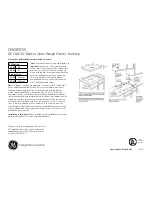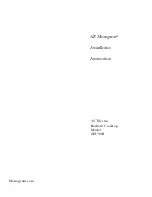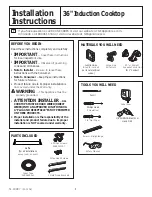
The group of attachments (fig. 9.4) is
made up of:
• 1 nut “A” ( external cylindrical thread
ISO 228-1)
• 1 sealing washer “D”
• 1 conical connection “B” (internal
cylindrical thread ISO 228-1, external
conical thread ISO 7-1)
• 1 Butane/Propane Gas connector “C”.
Exception for single unit cookers
that are not built-in.
• These cookers must be connected by a
flexible elastomer hose with a built–in
undetachable mechanical nozzle. Only
use those hoses that are authorised with
the label “AGB/BGV”.
• Two types of flexible elastomer hoses:
until April 2005, there were 2 types of
flexible elastomer hoses on the market:
- the old assymetrical model, including
an end with a fixed nozzle at the side
of the cooker, and a nozzle with a
loose nut and a built-in flat sealed joint
at the side of the inside fitting (stop
cock) .
- the new symmetrical model, including
a nozzle with a loose nut at both
sides, with a built-in flat sealed joint.
This symmetrical model is the only
one that will be available after the time
limit.
When installing a new cooker, or replacing
an existing one, the symmetrical model
must always be used.
Assembly
The gas inlet on the old cookers is equip-
ped with a conical thread ISO 7-1 – and
the hose is assembled as follows:
1. apply a sealing product to the thread
on the appliance: a strip of teflon or
sealing paste for threads (colmat) plus
some acrylic wool;
2. tighten up the linking component (the
cylindrical inside thread ISO 7-1 to the
cylindrical ouside thread ISO 228-1)
with the two keys on the cooker;
3. check that the sealed joint is firmly
inserted inside the moveable connec-
tion on the elastomer hose (new
model);
4. tighten up by hand the elastomer hose
on both sides;
5. tighten up with a spanner;
6. open the stop cock and check that
there are no leaks (soap bubbles) by
smearing on a frothing product ).
Cookers must be connected using R
HT
materials downstream from the
AGB/BGV certificated gas stop-cock,
except for single unit cookers that are
not built-in.
As a general rule, cookers are connec-
ted downstream from the gas stop-
cock, by:
• copper pipes having an appropriate
wall thickness, or;
• steel pipes, or;
• flexible R
HT
metal pipes with AGB cer-
tification, fitted in such a way that they
will not be crushed or pulled during
use. Their bending radius must not be
less than that specified by the manu-
facturer.
D
D
B
C
Fig. 9.4
A
BE
240









































